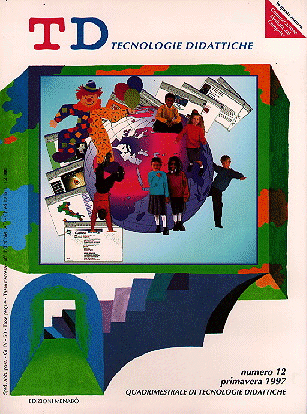Computer Mediated Communication as a resource in the University
Main Article Content
Abstract
Article Details
Authors who publish with this journal agree to the following terms:
- Authors retain copyright and grant the journal right of first publication with the work simultaneously licensed under a Creative Commons CC BY 4.0 Attribution 4.0 International License.
- Authors are able to enter into separate, additional contractual arrangements for the non-exclusive distribution of the journal's published version of the work (e.g., post it to an institutional repository or publish it in a book), with an acknowledgement of its initial publication in this journal.
- Authors are permitted and encouraged to post their work online (e.g., in institutional repositories or on their website) prior to and during the submission process, as it can lead to productive exchanges, as well as earlier and greater citation of published work (See The Effect of Open Access)
References
Barley Z. & Jenness M. (1993). Cluster evaluation: a method to strengthen evaluation in smaller programs with similar purposes. Evaluation Practice, vol. 14, 141-147.
Beattie G.W. (1982). The dynamics of university tutorial groups. Bulletin of the British Psychological Society, vol. 35, 147-150.
Brown A.L. & Campione J.C. (1988). Communities of learning and thinking: or a context by any other name. Contributions to Human Development, vol. 21, 108-126.
Crook C. (1994). Computers and the Collaborative Experience of Learning. London, Routledge.
Duffy C., Arnold S. & Henderson, F. (1995). NetSem: Electrifying undergraduate seminars. In Active Learning vol. 2. Oxford, CTISS Publications.
Gaver W.W. (1992). The affordances of media spaces for collaboration. In CSCW ‘92: Sharing Perspectives Proceedings of the Conference on Computer Supported Cooperative Work, Toronto.
Gibson J.J. (1966). The Senses Considered as Perceptual Systems. London: George Allen & Unwin.
Kaye A. (1989). Computer-mediated communication and distance education. In R. Mason & A. Kaye (Eds.), Mind-weave. Oxford, Pergammon Press.
Lave J. & Wenger E. (1991). Situated Learning Legitimate Peripheral Participation. Cambridge: Cambridge University Press.
Mantovani G. (1996). New Communication Environments. London: Taylor & Francis.
Rutter D.R., Stephenson G.M. & Dewley M.E. (1981). Visual communication and the content and style of conversation. British Journal of Social Psychology, vol. 20, 41-52.
Spears R. & Lea M. (1992). Social influence in CMC. In M.Lea (Ed.), Contexts of Computer-Mediated Communication. London: Harvester.

